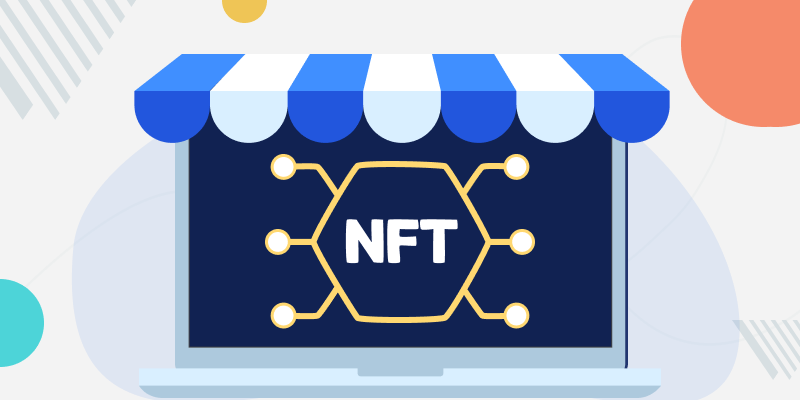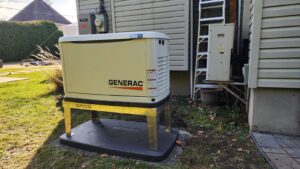Top 5 NFT Marketplaces Alternatives Of OpenSea

You can own skills, music, movies, and other online things using non-fungible tokens (NFTs). They are founded on cutting-edge technology known as blockchains, which powers cryptocurrencies like Bitcoin and cryptocurrency. On these platforms, you also need to be careful about different types of cryptocurrency scams, where a fair amount of crypto investors are losing money to these scams.
According to The 2021 NFT Market Information broadcasted by blockchain data firm Chainalysis, the NFT market has developed to be worth better than $50 billion as interest in them has grown. The most well-liked and rated alternatives of NFT marketplaces where you can purchase and sell these digital assets are listed below.
Table of Contents
An NFT Marketplaces: What Is It?
Digital platforms are used to buy and sell NFTs on an NFT marketplace. These venues allow users to hold, display, and sell their NFTs to other clients in exchange for cryptocurrency or cash. In addition, some NFT marketplaces permit users to mint their NFTs directly on the website. The NFT marketplace will typically accept the transfer of an NFT from one group to another in exchange for a commission.
Each NFT market functions according to its cluster of authorities. Depending on the one you utilize, there may be different sorts of NFTs available, prices, payment procedures, endorsed blockchains, and other regulations.
How do NFT Marketplaces operate?
You can browse the yields they sell once your document with an NFT marketplace. You can also add a payment technique, some of which let you use a credit card and others that need you to attach a cryptocurrency wallet.
A fixed fee is chargeable on some web pages, whereas an auction is utilized on others. If the transaction is processed, the NFT marketplace will log it on its blockchain, suggesting privilege modification.
Top 5 Alternatives of the NFT marketplace:
1. Sudoswap:
NFT marketplaces provide a practical means of attracting attention to an NFT you want to sell; however, the service is frequently charged for. But if you’ve already located a customer or even someone qualified to trade one or more additional of their NFTs for yours, you can proceed to sudoswap and set up a commerce swap for nothing, minus the price of gas.
On sudoswap, users can choose a specific address to be the lone participant in a trade or establish open swaps that anybody can observe and interact with. Moreover, NFTs can be exchanged not only for ETH or WETH, as is the case on OpenSea, but also for any ERC-20 token, ERC-721 NFTs, ERC-1155 NFTs, or even a mix of all three.
In contrast to OpenSea and additional NFT marketplaces, where users must yield gas to make orders, gas costs are optimized, so users only need to pay for asset approvals and exchanges. In addition, assets stay in users’ wallets until both parties acknowledge a trade on sudoswap, which has zero trust.
Instead of allowing clients to offer hyperlinks to exchanges, sudoswap uses trade codes as an additional layer of protection. This prevents con artists from duping users with false URLs. Instead, the maker must provide the recipient with the trade code to enter on the official sudoswap website and send a particular trade to them. NFT collectors can completely circumvent marketplaces by using sudoswap, which enables them to request transactions from buyers and sellers anonymously. As a result, when trading high-value NFTs, users might save a lot of money because there is no commission.
2. SuperRare:
SuperRare preys to a different segment of NFT collectors, whereas traditional NFT marketplaces cater to everyday customers wishing to trade avatar clusters or productive skill runs. Moreover, it has become the go-to website for exclusive artists selling one-of-a-kind, limited-edition artworks.
SuperRare is still in early access; therefore, only a hand-picked group of artists are being added to the marketplace. Those who want to market their NFTs must foremost present their artist silhouette to SuperRare and be accepted for inclusion on the site, even though the platform has fully launched in the past.
Although listing on SuperRare can be challenging, there are enormous advantages for artists. The platform benefits creators by guaranteeing that artists get 12% of all secondary sale proceeds for works previously sold on the SuperRare marketplace.
SuperRare has created an exclusive marketplace for expensive NFT paintings, but it’s not free. SuperRare is pricey compared to other marketplaces since 17% of direct sales go to SuperRare, 12% of secondary sales go to producers, and consumers must pay an additional 3% tax on all transactions.
But in exchange, SuperRare gives all market players white-glove care and ensures that artists are supported so they may keep making excellent digital art. The platform also places a high value on decentralization and uses a DAO system to run the community treasury and direct the platform’s development in the future.
3. LooksRare:
The first candidate on our index and one of the most recent assignments is a venue that directly challenges OpenSea’s firm strategy. LooksRare was introduced in Jan, 2022 and has drawn users by combining a token airdrop with trade rewards. Anyone who exchanged at most minuscule 3 ETH worth of NFTs between June 15 and December 15 of 2021 was qualified to receive a distribution of LOOKS tokens, with a more significant distribution going to those who traded more consistently.
Owners of LOOKS tokens can stake them to share in the trading fees, made from sales made on LooksRare. Given the substantial trading volumes on the market, the current yield for LOOKS staking is over 600%. LooksRare undercuts OpenSea by charging 1.5 percent instead of 2.5 percent for exchanges. However, there is a catch. Since LooksRare launched on January 10, it has consistently outperformed OpenSea in terms of raw trading volumes.
A distribution of LOOKS tokens by LooksRare is now being made to users with the most significant trading volumes. As a result, some users have been encouraged to engage in wash trades on valuable NFTs, moving them back and forth between wallets to generate more trading volume and, consequently, more LOOKS token incentives. In addition, with considerable activity on popular collections like Bored Ape Yacht Club, CloneX, and Azuki, LooksRare has also facilitated many honest purchases.
LooksRare strongly emphasizes decentralization and neighborhood involvement with the tagline “by NFT people, for NFT people.” LooksRare gives customers a cheaper, more streamlined experience with the opportunity to earn through NFT purchases, even for those who care less about the principles of Web 3.
4. DigitalMarket.Eyes:
Since the platform’s inception in September 2021, Digitaleyes.market, an open NFT marketplace on Solana, has enjoyed a solid and consistent lead start. Of course, anyone can mint their own NFT inventions on the platform, but the team works hard to review as many NFT projects as possible to give them a “verified” badge and remove false NFTs. However, since Digitaleyes is still in the alpha launch phase, it occasionally takes longer for listed NFTs to reflect.
5. Metaplex:
The market for NFTs on Metaplex is unconventional. Instead, it is an open-source platform that allows producers to build independently hosted and specialized NFT storefronts. Your Metaplex Storefront connects to a powerful on-chain decentralized program that mints and sells your NFTs directly, cutting out the middleman.
Summary:
The cutting-edge technology known as blockchains, which underpins cryptocurrencies like Bitcoin, is the foundation for non-fungible tokens (NFT). As interest in NFTs has developed, the market for them has grown to be worth more than $40 billion. On some platforms, consumers can directly mint their NFT online. Users provide trade codes as an extra layer of security in place of URLs to swaps. The platform employs a DAO architecture to manage the community money and guide future platform growth. These initiatives are all open-source platforms that enable users to make money through NFT purchases.





